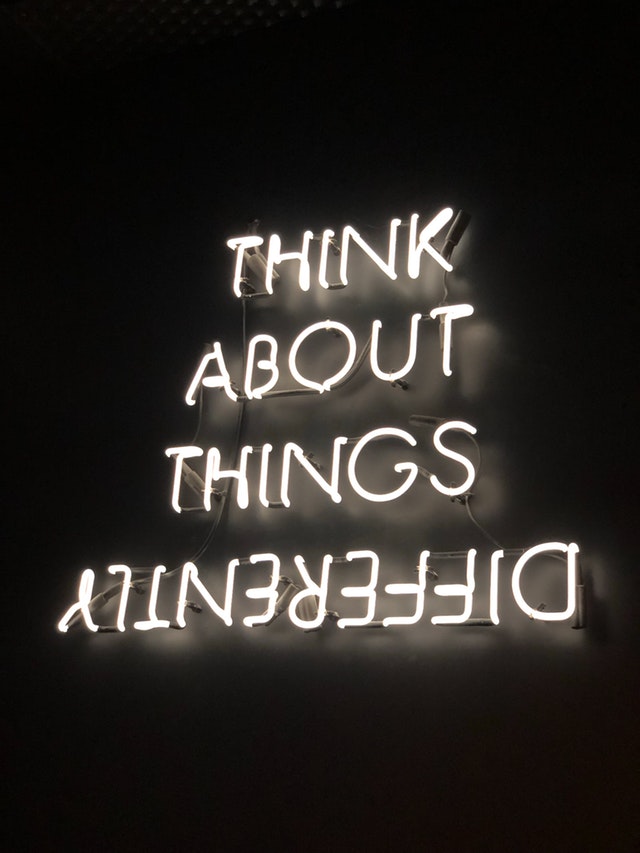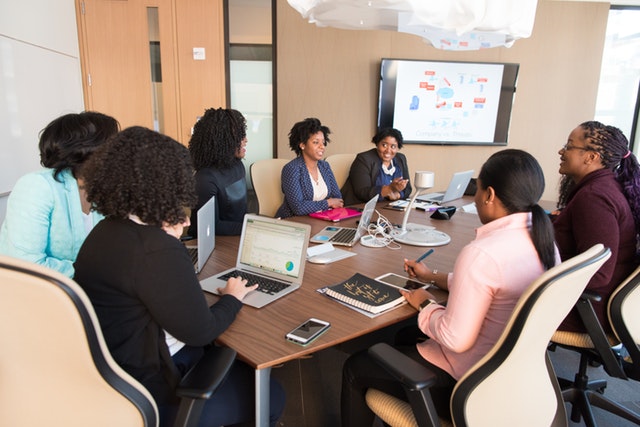
In mid-January, we at the Bank of America Institute for Women’s Entrepreneurship at Cornell asked you about your resolutions for 2020 (see full text of our question below this article) and we got a record-breaking number of responses! In fact, enthusiasm for the question led one woman to send us a photograph of her handwritten journal with goals outlined in 9 areas (even including marital goals!). Another reminded us cleverly that “2020 vision” is considered perfect, clear and perceptive. To all those that responded, we thank you for your sharing your thoughts and aspirations. Here we report on the results as a way to reflect, inspire and provoke thoughts for each of you as you enter the new year.
Resistance and Creative Alternatives
Many respondents said that they resist the idea of resolutions. As one woman put it “historically [my resolutions] have been broken by week two of January.” Instead, she takes an incremental approach, making a list of goals every on Sunday. Another argued that “too much unforeseen opportunity can appear any day,” so resolutions are too short-sighted. Others didn’t like a focus on just one goal, or wanted a spontaneous approach, either allowing “aligned intentions to bubble up organically” or just preferring to be “more transformational to be thinking about how I can achieve this vision for my life on a daily basis. ”
In addition, there were many suggestions for alternatives to the tradition of setting a New Year’s resolution. Some suggested “guardrails,” themes (such as obedience, vulnerability, abundance and “taking up space”) or intentions (such as being inspiring or thinking in terms of “upgrade”). Many suggested that a word or phrase for the year helps them envision their goals. Some of those suggestions had a Nike-inspired flavor, such as #GetItDone, “Just Do It”, “2020=Execution”, “Do It Anyway – scared, unsure, seemingly unprepared…do it anyway” and the trifecta of “courage, commitment and presence.”
For some, vision boards and white boards are being used to write out goals, intentions, words and themes. A creative idea came from one woman, who said she decided on 10 goals and created a screensaver out of the list, so that she would see them every time she sits down at the computer.
Resolutions for Self
An overwhelming number of resolutions had to do with goals related to personal life. Sometimes those goals were a determination to overcome barriers, such as being aware of constraints and “turn[ing] them into strengths” or overcoming a lack of confidence in order to “to spark professional mission.” Others focused on combating apprehension, for example, they wanted to put “forth dreams into action with the subtraction of fear,” or make sure that “the fear of not reaching my goals doesn’t keep me from trying.” Another women brought a different perspective, resolving that she would to live “inside of an intention bigger than I can touch.” Moira Vetta shared an article she wrote for Forbes about visualizing and acting larger (see references at end). The mantra to simply “not give up!” was shared, along with “stay open to new possibilities.” As one respondent put it, “if you don’t work on your own dream you will find yourself helping build someone else’s dream.” Interestingly, several women mentioned very specific personal goals, such as writing a book or making time to “get the kids on the bus.”
Some of the personal goals included aspects of improved self-esteem, for example being determined to say no, stop “going with the flow”, think bigger and “stop being so modest” and be more connected with oneself. One woman said she had “punted all one-sided relationships” out of her life. Others focused on health and well-being as a commitment to self-care. Sometimes special circumstances, such as being a new mother, going through a divorce, or leaving a job provided a specific context for self-care goals. Others pointed to decreasing stress with a variety of strategies, including better organization, and “letting go of being ‘The Fixer’ (stepping back so others have to step forward)”. Persistence was also mentioned, with one woman vowing to reach her customers, only stopping after as many as 10 attempts.
Personal financial stability was also mentioned by many writers, including selling their home, digging out of debt and becoming a better steward of finances. In addition, women wrote about education or skill-based goals, such as taking courses (including the ones in this Institute!), learning and practicing new activities in industry research, public speaking, or marketing and branding.
Resolutions for business
Start or re-start
Many resolutions or intentions were expressed in terms of business goals. Foremost among the resolutions was launching (or relaunching) a venture, including opening the doors for business, and often with specific dates. Sometimes a writer mentioned a detailed action, like registering the business, launching a website, producing inventory ( e.g. making 11 garment samples), but other times the intent was broader, as in “build something that solves a problem you are interested in.” Among these launch-related resolutions, some were starting from scratch, while others were moving their venture from a side hustle to a full-time activity. Others were entering new markets or changing marketing channels (e.g., moving away from Etsy to sell on a personal website). The goal in each case related to increasing the active pipeline of customers, through strategic decisions such as diversification, moving from online to brick and mortar (or the reverse), starting or changing the advertising targets, and moving toward automation for lead generation. Network and relationship building were also mentioned as a way to understand potential clients and the problems that could be solved.
Financial and overall planning
Views on planning-related resolutions ranged from those who favored specifics, such as weekly, monthly, quarterly and/or annual goals so they could be very deliberate about setting “incremental and final goals with regard to sales and planning.” Others said they have resolved to be “less focus[ed] on checklists, more focus[ed] on being…the person I strive to be each day.” Many respondents had specific revenue goals, with a broad range of targets (as low as $1500 and as high as in the millions). Other resolutions focused on securing funding, again, with a very broad range (as modest as $1000 and as ambitious as obtaining funding from a venture capitalist).
Gauging progress
We were also interested in how respondents planned to evaluate during the year whether they were making progress toward satisfying their resolutions. A common plan was to track and evaluate financial statements to compare goals and accomplishments throughout 2020. Others suggested that they would write in a daily journal about their goals or “reevaluate my calendar [every week] and clear things that feel burdensome or constrictive.” An innovative approach was used by another respondent, who created and shared a Google spreadsheet with friends so they could be accountable to each other. One woman responded that she’ll just know “when it is done” and another said to remember “done is better than perfect.”
As a final anecdote, we had one very conscientious woman give us an update on her resolution. Lisa W. wrote the following to us just last week: “Just wanted to send you a quick update to share that because of the Coronavirus concerns in China, I’m not going to hit my goal of Feb 14th to launch my eCommerce company – factories are staying closed longer over Chinese New Year to try to help contain the virus, and we were cutting it super close to begin with. So although we had (almost) everything lined up to make my 90-day launch goal timeline, we’re at the mercy of nature. Everything happens for a reason though, so I’m sure there’s a blessing in this somewhere, and of course I’ll still be launching ASAP!”
So please feel free to reach out and let us know how you are doing on your resolutions, intentions, themes, phrases and words as we move through 2020. We are continually inspired and educated by all that you share with us!
Resources Recommended by Respondents:
- Blog on “guardrails” https://www.perrymaughmer.com/blog-1/2019/11/27/guardrails-transcend-goals
- TedX Talk – Nouman Ashraf on leadership – https://www.youtube.com/watch?v=FmnxEMG8Ti8
- Moira Vetter’s piece in Forbes– https://www.forbes.com/sites/moiravetter/2020/12/31/3-resolutions-on-the-way-to-10-million-in-revenue/#4f704b177f5a
- Business Planner by Christy Wright https://www.daveramsey.com/store/product/business-boutique-goal-planner (note: Christian inspirations are included, so if you are not comfortable with that be aware.)
Text of the Original Question asked in January 2020 – Recently, we posted a link to a Fast Company article sharing important decisions made by four entrepreneurs that changed the direction of their business or career. Specifically, these decisions came in the form of resolutions (one woman severed ties with her business partner, one woman resolved to stop saying “I’ll be happy when…”, etc) Since we are at the start of a new year and a new decade, we were curious:
- Have you have made a resolution or set an intention for 2020 with a specific business or professional goal in mind? Would you share it with us?
- How will you know if you have achieved your goal? (Or alternatively, let us know why you chose NOT to make a resolution/set an intention!)







